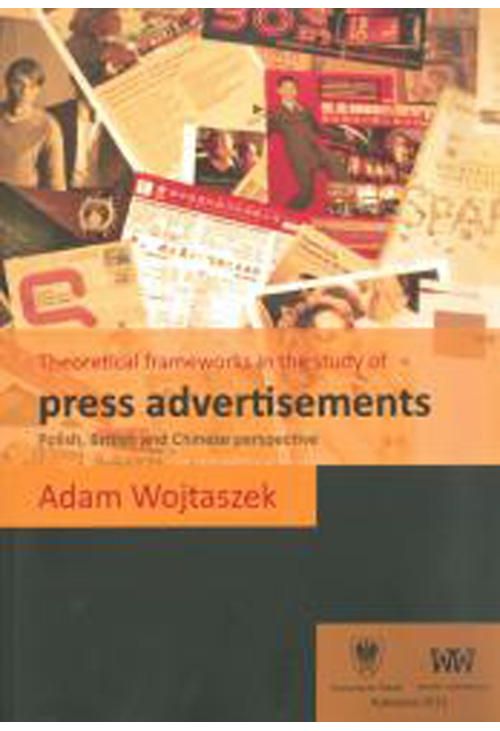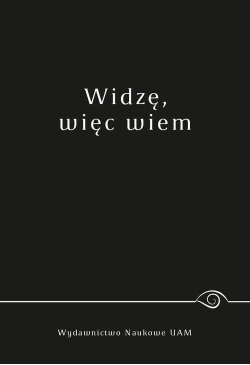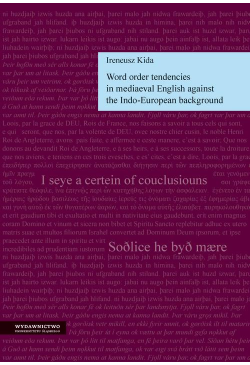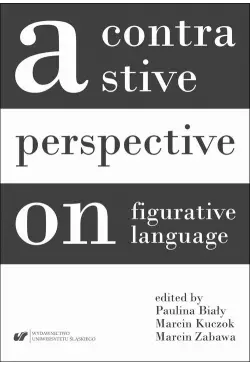
- -14%
ebook Theoretical frameworks in the study of press advertisements: Polish, English and Chinese perspective
Odkryj fascynujący świat ebooków dzięki naszemu sklepowi z książkami elektronicznymi, gdzie możesz pobrać najlepsze publikacje cyfrowe w formacie PDF. Kup e-booka i ciesz się wygodnym czytaniem na swoim urządzeniu.
"Theoretical frameworks in the study of press advertisements: Polish, English and Chinese perspective" to wyjątkowe wydanie elektroniczne autorstwa Adama Wojtaszka, opublikowane przez Wydawnictwo Uniwersytetu Śląskiego w 2011 roku. Książka ta stanowi innowacyjne podejście do badań nad reklamami prasowymi, prezentując nowe modele analizy i wykorzystując przykłady z różnych krajów.
W tej publikacji znajdziesz bogaty materiał ilustracyjny oraz obszerną bibliografię literatury poświęconej dyskursowi reklamowemu, co czyni ją niezwykle wartościowym źródłem wiedzy dla badaczy i miłośników marketingu. Niezależnie od tego, czy interesują Cię bestsellery ebooków, czy szukasz inspiracji w literaturze pięknej, nasza oferta ebooków do pobrania zaspokoi Twoje potrzeby czytelnicze.
Zanurz się w fascynującym świecie czytania ebooków i odkryj najlepsze ebooki dostępne w naszym sklepie. Kup e-booka już dziś i ciesz się komfortem lektury na swoim urządzeniu.
Spis treści ebooka Theoretical frameworks in the study of press advertisements: Polish, English and Chinese perspective
Table of contentsAcknowledgements / 9
Abbreviations used in the text / 11
Preface / 13
Chapter One
Academic reflections on the phenomenon of advertising
1.1. Introduction / 17
1.2. The scope of analysis / 19
1.2.1. The medium / 21
1.2.2. Analysts’ favourites / 25
1.2.2.1. Code-mixing in advertising / 26
1.2.2.2. The wordplay in commercials / 28
1.2.2.3. The application of gender stereotyping in advertisements / 31
1.2.3. Dissecting advertisements / 35
1.2.3.1. Illustrative elements: pictures, videos, music, sound effects / 35
1.2.3.2. Slogans / 37
1.2.3.3. Brand names / 39
1.2.3.4. Disclaimers and disclosures / 44
1.3. The input/output perspective / 46
1.3.1. The content analysis / 47
1.3.1.1. The size of the sample / 48
1.3.1.2. The selection of focus / 48
1.3.1.3. Aspects of bottom-up and top-down design / 51
1.3.1.4. Exemplification of inductive content analysis / 53
1.3.2. The processing and responses / 55
1.3.2.1. The selection of the input material and the area of focus / 56
1.3.2.2. The perspective of the subjects’ responses / 62
1.3.2.3. The participant characteristics / 66
1.3.2.4. Summary / 67
Chapter Two
Politeness Theory in the analysis of advertisements
2.1. Introduction / 69
2.2. Brown and Levinson’s model / 70
2.3. Reflections on politeness, face and the applicability of the model / 75
2.4. Modeling the selected aspects of face / 78
2.5. Content-analysis-based illustration / 80
2.6. The theoretical basis of the study design / 87
2.6.1. The materials and the subjects / 89
2.6.2. The questionnaire construction / 90
2.7. The qualitative investigation / 94
2.7.1. The Polish responses / 94
2.7.2. The British responses / 105
2.7.3. The Chinese responses / 110
2.8. The survey-based intercultural comparison / 115
Chapter Three
The new perspectives
3.1. Introduction / 124
3.2. Salient meanings in advertisements / 125
3.2.1. Graded Salience Hypothesis – an overview / 125
3.2.2. Static and dynamic attributes of salience / 129
3.2.3. Salience as the feature of linguistic and extra-linguistic units / 138
3.2.3.1. The exploitation of font / 139
3.2.3.2. Pictorial metonymy / 146
3.2.3.3. Visualisations of idiomatic meanings / 151
3.2.3.4. Visuals directing the interpretation / 155
3.2.3.5. Summary / 159
3.2.4. Optimal innovation in press advertisements / 160
3.2.4.1. Study design and elicitation method / 161
3.2.4.2. Gauging the level of innovativeness / 162
3.2.4.3. Measuring the attractiveness of innovation / 163
3.2.4.4. Discussion of the results / 164
3.2.5. Salience in advertising: the new territory / 167
3.3. Dynamic Nature of Context / 172
3.3.1. Dynamic Model of Meaning – an overview / 173
3.3.2. The perspective of the sender and the recipient / 179
3.3.2.1. Reconstruction of the creative process / 180
3.3.2.2. Predicting the viewers’ reactions / 185
3.3.2.3. Peculiarities of the low-involvement processing of commercial messages / 187
3.3.3. The role and components of context in advertising communication / 191
3.3.3.1. Activation of multiple consenses / 191
3.3.3.2. The Stratified Model of the actual situational context / 197
3.3.3.3. Modelling the interpretation of advertisements / 204
3.3.4. Expansion and extended application of the model / 206
3.4. Summary / 215
References / 219
Appendix 1
Transcript of advertisements used in the study of face-work / 239
The Polish advertisements / 240
The British advertisements / 246
The Chinese advertisements / 250
Appendix 2
Investigation of the elements of face and face-work / 255
The Polish questionnaire / 256
The English questionnaire / 257
The Chinese questionnaire / 258
Appendix 3
Investigation of optimal innovation / 259
Originality and innovation: Polish version / 260
Originality and innovation: English version / 261
Appreciation: Polish version / 262
Appreciation: English version / 263
Index of names / 265
Subject index / 271
Szczegóły ebooka Theoretical frameworks in the study of press advertisements: Polish, English and Chinese perspective
- Wydawca:
- Wydawnictwo Uniwersytetu Śląskiego
- Rok wydania:
- 2011
- Typ publikacji:
- Ebook
- Język:
- angielski
- Format:
- Liczba stron:
- 283
- Miejsce wydania:
- Katowice
Recenzje ebooka Theoretical frameworks in the study of press advertisements: Polish, English and Chinese perspective
-
Reviews (0)

Na jakich urządzeniach mogę czytać ebooki?
- -14%












@CUSTOMER_NAME@
@COMMENT_TITLE@
@COMMENT_COMMENT@